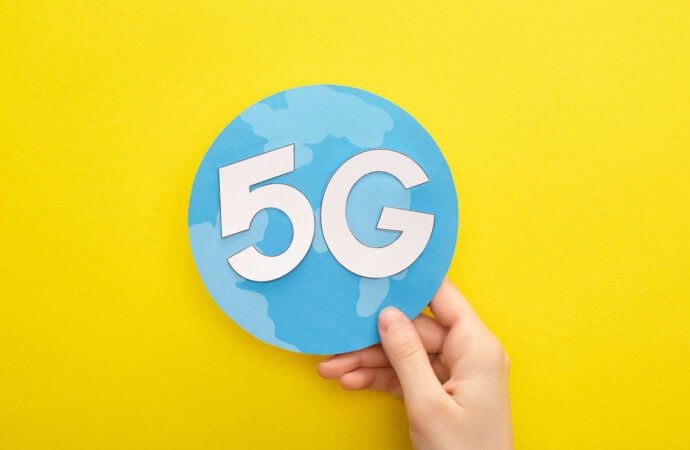The shift from 4G to 5G isn’t just about faster internet speeds—it’s about a new way of interacting with technology. As 5G networks roll out across the globe, they promise to unlock possibilities that go far beyond what 4G could offer. We’re talking about real-time gaming with zero lag, seamless video calls with crystal-clear resolution, and the potential for smart cities where everything is interconnected.
But what does that mean for you on a daily basis? Whether you’re streaming, working remotely, or just browsing social media, 5G could fundamentally change how you experience the digital world. The upgrade from 4G to 5G isn’t just an incremental improvement—it’s a leap that could make your tech life smoother, faster, and more reliable.
In this post, we’ll break down the key differences between 4G and 5G, and explore how this next-gen network could impact everything from your morning commute to your weekend binge-watching sessions. If you’re wondering whether the hype is justified, or what 5G can really do for you, read on.
The Origins of 4G and the Birth of 5G: A Brief History of Two Telecom Revolutions
Before we dive into the technical details and real-world applications of 5G, let’s take a moment to look back at the origins of these technologies.
4G technology made its debut in the early 2010s, marking a significant milestone in the evolution of mobile internet. The first deployment occurred in Scandinavia, with Sweden and Norway leading the way in 2009. This was quickly followed by global expansion. For the first time, users could enjoy truly mobile high-speed internet, enabling smooth video streaming, fast file downloads, and seamless access to advanced applications. LTE (Long Term Evolution), the most popular 4G standard, revolutionized how we use the internet daily, transforming smartphones into essential tools for entertainment, work, and communication.
Fast forward over a decade, and the world is now stepping into the 5G era. South Korea was the first to introduce 5G technology in 2019, becoming a pioneer in the development of this next-generation network. Since then, 5G has rapidly spread across the globe, reaching countries like the United States, China, and many European nations.
What are the Key Differences Between 5G and 4G?
With the arrival of 5G, everyone is asking what new capabilities it brings compared to 4G. While 4G has served us well, 5G is set to raise the bar even higher. In this section, we’ll explore the biggest differences between 5G and 4G and why 5G is generating so much excitement.
Internet Speed
One of the most striking differences between 5G and 4G is internet speed. 4G, specifically LTE, offers download speeds ranging from 10 to 100 Mbps. This is sufficient for most online activities—browsing websites, watching HD videos, or playing online games.
5G, however, takes things to a whole new level. Theoretical speeds in 5G networks can reach up to 10 Gbps, about 100 times faster than 4G. In practical terms, this means users can download 4K movies in just a few seconds, and 8K streaming will become commonplace. The speed of 5G also opens the door to more advanced applications, such as augmented reality (AR) and virtual reality (VR), which require high bandwidth and low latency.
Latency
Latency refers to the time it takes for data to travel from its source to its destination. With 4G, latency typically ranges from 30 to 50 milliseconds (ms). While this is fast enough for most everyday tasks, in certain scenarios like online gaming, even these small delays can be noticeable.
5G reduces latency to as low as 1 ms, which is almost instantaneous. This improvement makes gaming more responsive and enables remote surgeries without any delays. In applications such as autonomous vehicles, where every millisecond counts for safety, the low latency of 5G could literally save lives.
Network Capacity
Another key difference between 5G and 4G is network capacity—the number of devices that can simultaneously connect to a network without a drop in performance. As the number of internet-connected devices—ranging from smartphones and tablets to IoT (Internet of Things) devices—increases, network capacity becomes increasingly important.
While 4G, though significantly better than its predecessors, has limited capacity, it can struggle in crowded areas like city centers or stadiums, where users might experience slower speeds and reduced connection stability. In contrast, 5G is designed to handle a much larger number of devices in the same space, allowing for smooth internet access even in the most congested environments. This makes 5G particularly well-suited for smart cities, where thousands of devices need to operate simultaneously.
Coverage
Despite its many benefits, 5G comes with its own challenges, one of which is coverage. 4G networks operate on lower radio frequencies, which have a wider range and better penetration through obstacles like building walls. This means that a single 4G base station can cover a relatively large area.
5G operates on higher frequencies, which allow for higher speeds and lower latency but at the cost of range. 5G signals have shorter reach and are more susceptible to interference, meaning the network requires a much larger number of base stations, especially in urban areas. In practice, this makes building 5G infrastructure more complex and expensive, and 5G coverage, particularly in the early stages of deployment, may be more limited compared to 4G.
Real-World Applications of 5G
5G technology isn’t just about faster internet on your phone—its potential is far greater, with real-world applications already transforming various industries worldwide. Here are a few examples of how 5G is being used in practice.
- Smart Cities
One of the most promising applications of 5G is in the development of smart cities. With 5G, cities can manage infrastructure and services more efficiently. For example, in South Korea, 5G networks are used to manage traffic with smart traffic lights that can adjust in real-time based on traffic flow. This technology not only improves traffic efficiency but also helps reduce emissions, benefiting the environment.
- Autonomous Vehicles
Autonomous vehicles are one of the most innovative examples of 5G in action. The speed and low latency of 5G enable vehicles to communicate with each other and with road infrastructure almost in real-time. In the United States, for instance, 5G is being tested for managing autonomous trucks. These vehicles can exchange data with other vehicles and traffic management systems, increasing road safety and optimizing routes, leading to fuel and time savings.
- Telemedicine
5G is also revolutionizing the healthcare sector by introducing advanced telemedicine solutions. A prime example is remote surgery, which is becoming increasingly viable thanks to 5G networks. In China, surgeons performed one of the first such operations on a patient located hundreds of kilometers away, using real-time controlled surgical robots. The low latency of 5G allows for precise control over medical equipment, something previously impossible.
- Augmented Reality (AR) and Virtual Reality (VR)
The development of 5G opens up new possibilities for AR and VR. In Japan, 5G is being used to create advanced AR applications for use in education, tourism, and retail. For instance, museums can offer virtual tours with AR elements that provide additional information and interactive experiences, enhancing visitor engagement.
- Industry 4.0
In the industrial sector, 5G plays a crucial role in the development of Industry 4.0, the fourth industrial revolution. Factories are using 5G networks to manage automated production processes in real-time. For example, in Germany, 5G enables communication between robots and production management systems. This allows for the rapid adjustment of production processes to changing market demands, increasing efficiency and reducing costs.










Leave a Comment
Your email address will not be published. Required fields are marked with *